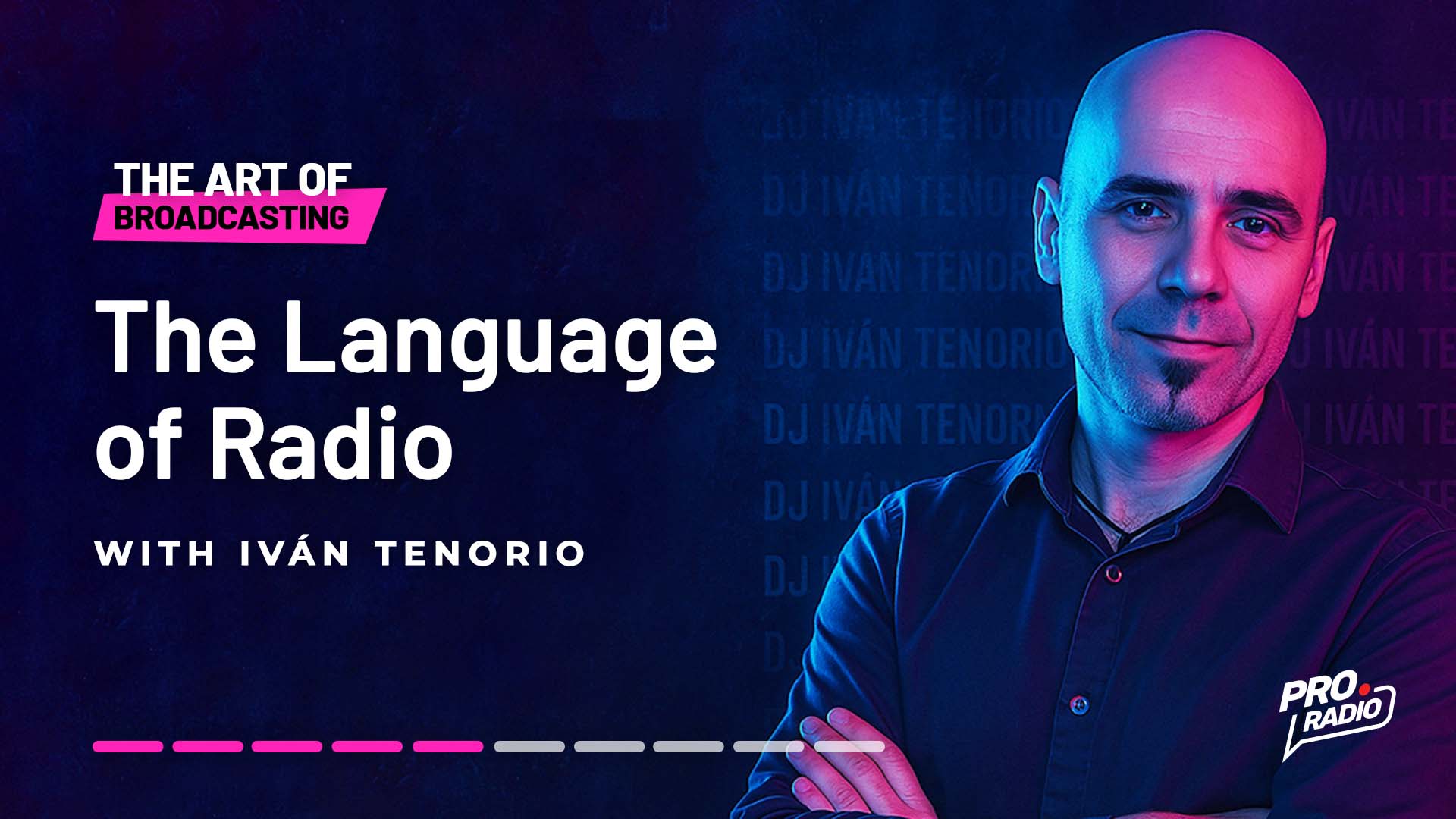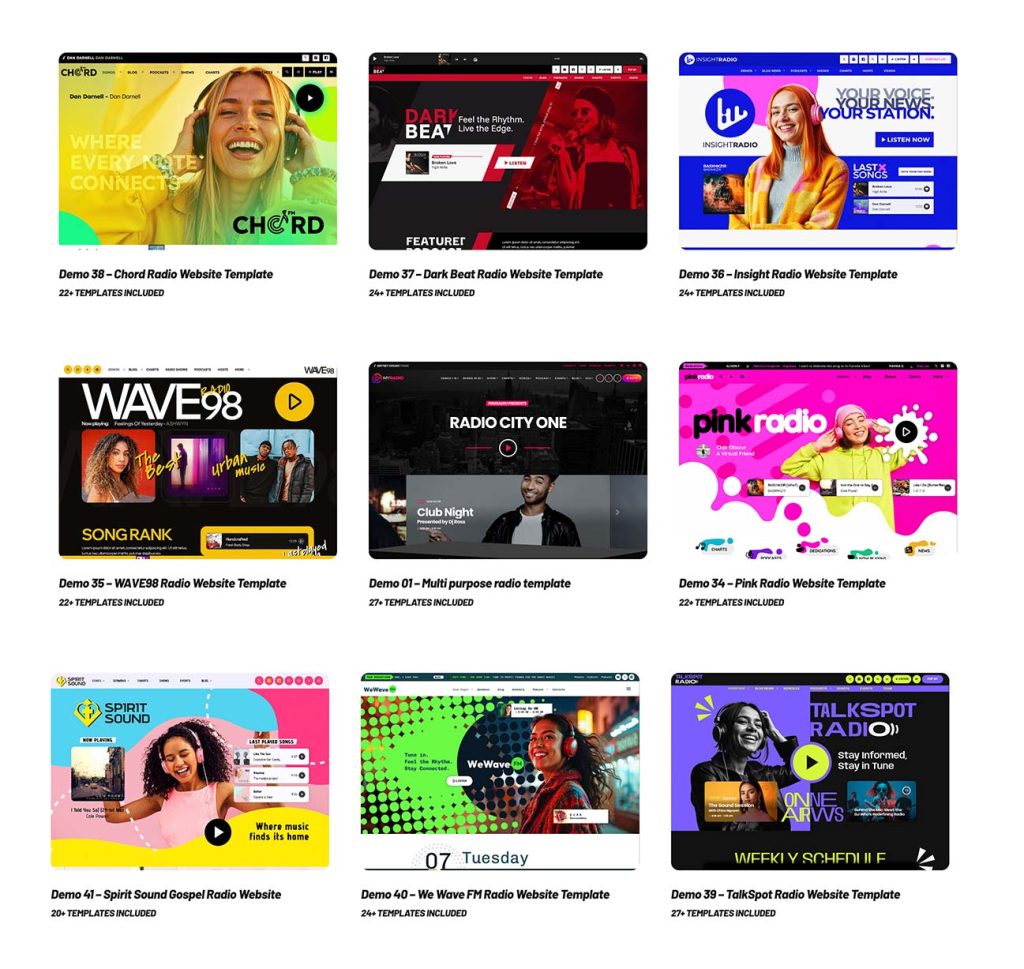
- arrow_back Home
- keyboard_arrow_right The Art Of Broadcasting
Chapter 5: The Language of Radio – How to fix your radio scripts to grow your listeners
The Art Of Broadcasting 37 187 Pro Radio WordPress Theme May 29, 2025

Quick sneak peek
Writing to Be Heard: Speak to the Ear, Not the Screen
Broadcasting isn’t just about using your voice. And writing for radio is not the same as writing to be read.
Radio—even digital radio—is still an oral, auditory, and emotional medium. Your listener doesn’t have subtitles, can’t rewind, can’t pause. What you say either lands the first time… or it’s gone forever.
So, if you want your station to sound consistent, stylish, and full of personality, you need to master one essential skill: radio language.
This isn’t about academic grammar or “speaking properly.”
It’s about connecting, flowing, sounding natural… and leaving a mark.
- 1. Writing to Be Heard: Speak to the Ear, Not the Screen
- 2. Get the next chapters in your inbox!
- 3. Radio Is Written With the Ear
- 4. Keys to Radio Language
- 5. ✍️ How to Train This Language
- 6. Lesson Learned
- 7. Practice: Turn “Written” Text Into “Radio”
- 8. AI Hack: Create Your Own Radio Copywriter GPT
- 9. Plan B: If You Don’t Have GPT Plus
- 10. The Voice That Writes Is the One That’s Heard
- 11. Academic Bonus: You Knew This Was Coming…
- 12. Get the Next Chapters Right in Your Inbox
- 13. Launch Your Radio Website Today!
Get the next chapters in your inbox!
Radio Is Written With the Ear
One of the biggest mistakes made by radio or podcast creators is writing like they’re drafting a blog post.
Long sentences, endless subordinates, unnecessarily complex structures… those might work on paper. But to the human ear, they sound clumsy and forced.
Radio—even the most cultured or specialized kind—is meant to sound like you’re speaking to someone right now. With rhythm. With pauses. With closeness.
Think about it:
Would you say this in real conversation?
“We will now proceed to review the various considerations that have influenced the phenomenon in question…”
Of course not. You’d say:
“Let’s take a look at what happened and why.”
That’s the shift.

Keys to Radio Language
1. Natural Orality
We write to be heard. So:
- Short sentences
- Familiar words
- Active verbs
- Conversational rhythm
Even if you’re reading it on air, it should sound like you’re talking—not reading.
2. Direct Address
Radio has a unique advantage: the listener feels like you’re talking directly to them. Use it.
- Avoid “you all” or “everyone” when possible.
- Use the singular: “Today we’re going to listen to…”, “I’ve got something curious for you…”
- This builds closeness, trust, and emotional connection.
3. Clarity Above All
There’s no rewind button on radio.
- One idea per sentence
- No run-ons
- Repeat what’s important—without being annoying
- Use tone, not over-explaining, for emphasis
4. Rhythm and Inflection
Not everything is written the same. A well-placed pause can be more powerful than a complex word.
Punctuation in radio isn’t grammatical—it’s rhythmic.
Example:
“Today I’m going to tell you a story.
One of those that only happen once.
And if you’re wearing headphones… even better.”

✍️ How to Train This Language
Write less. Talk more. Or better yet: talk while you write.
Say your scripts out loud while drafting. Listen. Adjust. Rewrite.
Until it sounds natural. Until it sounds like you.
And if you’re using AI to help—like we’re about to see—make sure it doesn’t write like a robot. You’ll still need to edit it.
Lesson Learned
Radio isn’t written. It’s heard.
If it sounds forced, it won’t connect. If it sounds distant, it won’t matter.
But if it sounds natural, close, rhythmic, and clear… that’s when people stay.
Practice: Turn “Written” Text Into “Radio”
- Pick a paragraph (from your article, website, or this book).
- Read it aloud.
- Mark where you’d breathe, which words are extra, what sounds too formal.
- Rewrite it like you’re talking to someone next to you.
- Read it again. Smoother? More natural?
Save it. This exercise is essential. Do it for every script, every intro, every capsule.
AI Hack: Create Your Own Radio Copywriter GPT
You know you can ask AI for one-off tasks. But let’s take it further—train it to think like a radio copywriter, with your style, tone, and needs.
What’s a GPT Agent?
It’s a predefined setup you can use in ChatGPT (Plus version), where you define the role, style, tone, functions, and limits of a “virtual assistant” trained for a specific task.
In this case, you’re training it as a radio copywriter. And not just any writer—one who understands rhythm, avoids jargon, and writes to be spoken.
Step-by-Step Setup
- Go to ChatGPT and open “Explore GPTs” (Plus version only).
- Create a new agent. Call it something like: Radio Copywriter AI
- Paste this profile into the instructions:
Base Prompt
Role: You’re a writer specialized in radio content. Your style is oral, conversational, clear, and emotional. Tone: Close, natural, paced, jargon-free. You write like you’re speaking to one listener wearing headphones. Format: Short sentences, fluid rhythm, punctuation designed for voice—not reading. Functions: - Write short intros for shows or segments - Create audio-style transitions - Narrate brief historical facts, cultural bits, or music context - Suggest slogans or radio liners - Adapt written content into spoken radio language
Practice: Put It to Work
Ask your agent:
“Write an intro for a late-night segment on a cultural station. Tone: close and suggestive.”
Read the result aloud. Tweak pauses. Change words. Adjust rhythm.
Ask again with your edits. Repeat until it sounds “like you.”
Why Bother?
Because with a custom agent:
- No need to re-explain your needs every time
- It replies in your tone
- It gains consistency
- You write faster with a solid base
- And it gives you material to edit, not rebuild from scratch
Remember: AI has no ear. But you do.
So your voice is what fine-tunes the final result. Now—just with less effort.
Plan B: If You Don’t Have GPT Plus
Just copy and paste this prompt whenever needed:
Write a short script for online radio. The tone should be close, natural, with short sentences, addressed to one listener. It must sound conversational, with oral rhythm and no jargon. The content should be made to be heard, not read. The topic is: [insert topic].
You can ask for:
- Show or segment intros
- Block transitions
- Emotional closings
- Mini-narratives
- Song or artist context
The Voice That Writes Is the One That’s Heard
You don’t need to be a professional announcer. You need to know how to sound like yourself. With naturalness, clarity, and intent.
Because on radio, language isn’t just a tool. It’s the channel where your identity flows.
Academic Bonus: You Knew This Was Coming…
So far we’ve focused on writing to sound right. But we both know radio isn’t just words.
Radio—and by extension, your station—lives in voice, music, sound effects… and silence.
That’s where identity is truly shaped.
Where it’s not just said—but felt.
Let’s explore these expressive elements of radio language that aren’t written but make all the difference between sounding good… and sounding unforgettable.
Get the Next Chapters Right in Your Inbox
Want more expert tips to fine-tune your radio station’s sound?
Coming up next: Automate without being noticed
Subscribe to our newsletter and we’ll send each new chapter directly to your inbox—plus you’ll get access to free radio templates, exclusive updates, and special discounts for broadcasters, podcasters, and internet radio creators.
Don’t miss out—Pro Radio helps you build the station you’ve always dreamed of.
Launch Your Radio Website Today!

With Pro Radio, you can create a powerful, professional radio website with everything you need:
- Audio player for any streaming provider
- Radio show scheduling
- Podcast support
- Events calendar
- No coding needed
40+ prebuilt radio website designs ready to use!
You may also like

Start Your Internet Radio Station
Products
Radio Features
Copyright 2019-2026 ProRadio® Qantum Themes SL® All Rights Reserved









